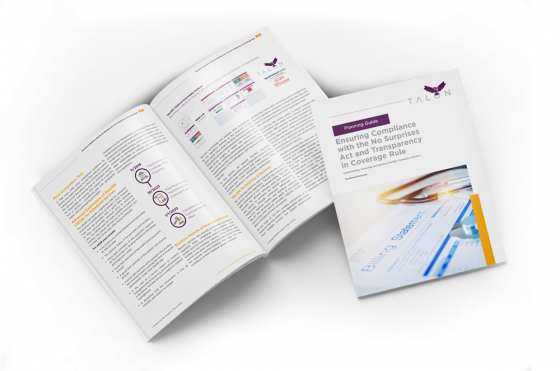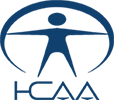Happy New Year from the MyMedicalShopper Team!
Yup, it’s 2016. And with a new year, comes new goals, and trends, and fads.
If you’re looking once again to take control of your healthcare, we’ve got some easy ways to ensure you’re able to take control physically and financially. They’re easy. Really easy. We’re pretty certain you’ll be able to check these next 7 goals off your list in no time, save money, and feel better. Check them out!
1) Use a price transparency tool MyMedicalShopper
Hey! You! Want to know if you’re paying too much for your healthcare? Well, we have a one-question quiz for you: Are you a MyMedicalShopper member?
If you answered “No,” then you’re paying too much for healthcare. How do we know? Well, did you know that each provider charges different amounts for the same types of procedures? That lipid panel could be $50 at one provider and $12 at another provider a mile away. So you need to be shopping around for your healthcare. MyMedicalShopper makes comparison shopping for healthcare as easy as a Google search. Go ahead, try it out! And if you think cost is equated with quality in the healthcare industry, you’re wrong! Check out these studies if you don’t believe us!
2) Enroll in a high-deductible health plan that is HSA-compatible
Let’s start with high-deductible health plans. There are quite a few reasons you should adopt this kind of plan.
Healthy people benefit from HDHPs because they save money that would have otherwise wasted on insurance premiums. HDHPs, like all health plans under the ACA, cover preventive care at no additional cost, so you don’t pay out-of-pocket for annual physical exams and certain screenings.
When you have an HDHP, we recommend you enroll in a health savings account (HSA) to help pay for qualified medical expenses and limit your out-of-pocket exposure. That way you can enjoy low premiums and low out-of-pocket expenses.
And here’s what makes health savings accounts (HSAs) so great:
- Both you and your employer can make pre-tax contributions
- You can make tax-free withdrawals from your HSA at any time to pay for virtually any medical expense
- Unlike other medical savings accounts, the remaining balance in your HSA will roll over at the end of the year, so you can keep building on your savings
- When you turn 55, you can contribute an extra $1000 per year to your account
- When you turn 65, you can make tax-deferred withdrawals, just like a 401(k)—it’s essentially another retirement account!
Overall, opening an HSA is a great investment in your healthcare; and if you’re healthy, it’s another great investment vehicle for your retirement.
3) Exercise!
Yeah, we know, this is on everyone’s list, again.
And it’s the same damn promise you make to yourself every year.
Maybe you never keep this promise because you get sick of the hamster wheel-treadmill routine. Which is fair, but we’ve got a list of different exercises for you to mix up your routine with so you won’t have an excuse to not follow through this year!
Here are the top exercise trends for 2016 courtesy of Shape magazine:
4) Read, explore, and question your diagnosis, doctor, and medical bills
When you receive a diagnosis from your doctor, doing some research on treatment options available and required may save you money in the long run. By educating yourself, you can be better prepared for future doctor’s visits and be a self-advocate when it comes to discussing the cost and necessity of any testing or procedures.
While researching, it’s probably best to avoid web forums and threads on discussing any diagnoses, because they tend to have a lot of non-expert information floating around. A good place to start is the Effective Health CareProgram website, which is a service provided by the U.S. Department of Health and Human Services.
Doctor
Communication is the key to any successful relationship, and the one between you and your doctor is no different. In fact, since this relationship has a direct impact on your physical well-being, it may be one of the most important! The experts at Baylor College of Medicine created a workshop called “The ABCs: How to Talk toYour Doctor.” The mnemonic device that this workshop revolves around aims to enhance the patient-doctor relationship, all to ensure an optimal healthcare experience.
So what does the acronym stand for?
- Ask questions
- Be prepared
- Communicate desires and concerns
By taking these steps to strengthen the relationship between you and your doctor, you can become a stronger advocate for your healthcare. And when you’re an empowered advocate, you improve the quality of your care, as well as your health.
Medical Bills
Your medical bill has finally arrived! You open your bill, take a quick glance at a list of charges and wonder what they mean. Oftentimes, when you get a test or procedure (simple or complex), there are associated costs, like professional fees that you are billed for. These are charges that you will be billed for in addition to the test or procedure that was performed.
Then you take another glance and see you were billed twice for a test or service. This mistake happens often, which is why it is important to always check over your medical bills. Once you find a mistake you can call your provider, make them aware of their billing mistake, and save yourself some money. (And if you’re lucky enough to work for an employer who has provided MyMedicalShopper as a benefit, you’ll have AutoAudit TM working tirelessly in the background, constantly checking your EOBs for medical billing errors and alerting you to any issues.)
Here are some things to look out for and questions to ask when it comes to your medical bills:
- Make sure there are no duplicate charges for any tests or procedures.
- Make sure you are not being charged for a test or procedure that wasn’t performed.
- If your bill arrives and only shows the total you owe, without a breakdown of services you are being charged for, you are entitled to an itemized bill and can request one. You may find a mistake and save yourself a lot of money.
- Check your bill against your explanation of benefits (EOB) to make sure you were not charged incorrectly for any medical test or procedure, that your insurance is covering every service they should be, and that the procedure/test and total payment amounts match.
5) Use an urgent care facility instead of the emergency department
Using an urgent care facility when appropriate will not only save you money, it will save you time, because these facilities oftentimes have shorter wait times than emergency departments.
Walk-in facilities are also equipped to handle medical emergencies like broken bones, kidney infections, and other non-life threatening problems, so you can think of them as an alternative to running to the ER.
6) Use generic drugs
Unless the medication you are prescribed is fairly new, your medicine likely has a generic alternative available. Generic medications are great because they cost less and yield the same results.
In fact, according to the Food and Drug Administration (FDA), studies show that generics have the same quality and can cost 80-85% less than a brand name drug.
Take a look at the table below to see the stark difference between brand name and generic drugs.
7) Use a prescription medication price transparency tool
Want to save even more on prescription medicine costs? Then choose a generic brand of your medication and use a prescription medication price transparency tool. We’ve checked out quite a few, and we recommend giving GoodRx a go.
If you’re not using their service, you’re probably paying too much for your prescriptions—even if you have insurance—because it turns out that medication prices vary from pharmacy to pharmacy just like medical tests and procedures differ by care provider.
GoodRx is free to download on the App Store, Google Play, and can also be accessed at GoodRx.com.







